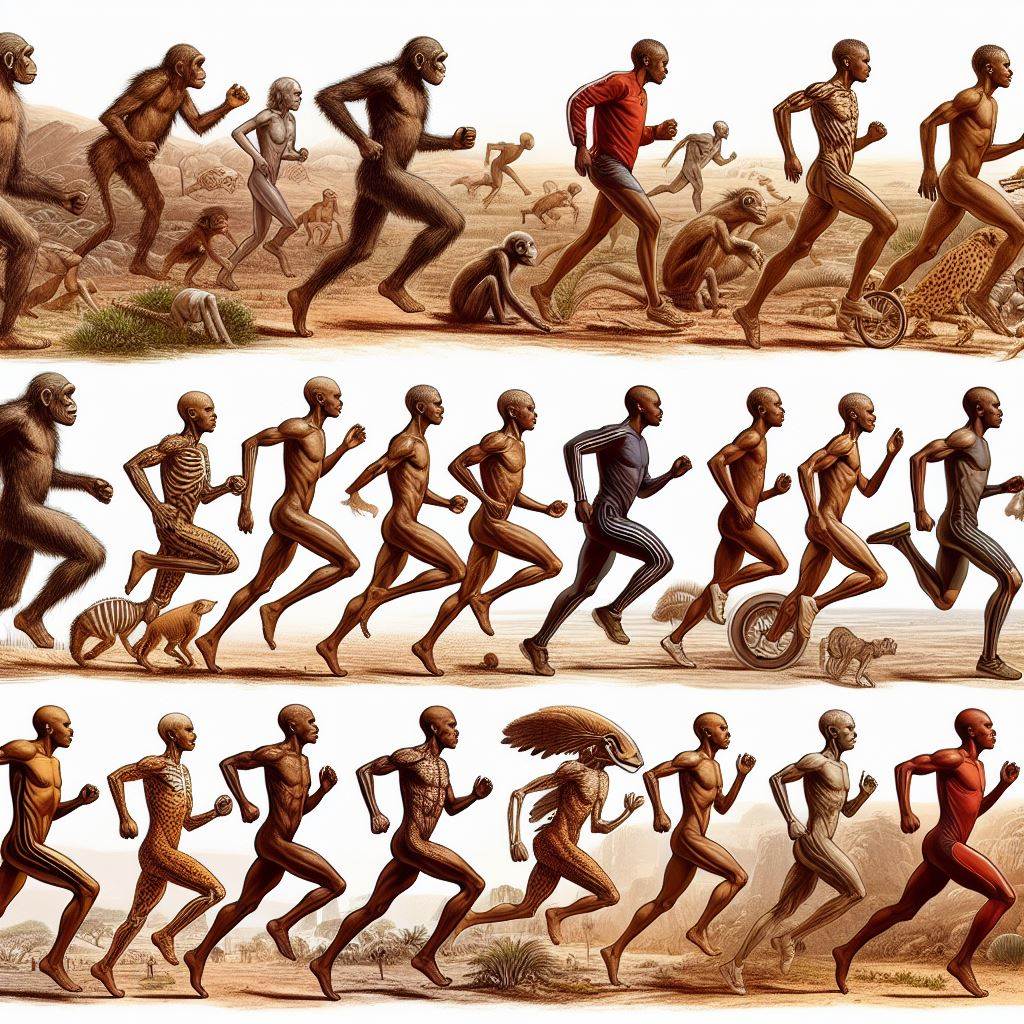Exploring how running started means looking back at times when running was about survival, not choice. This article dives into when people began running, its evolution, and how it has shaped our culture and bodies. Join us on this journey through time!

Running for survival
Believe it or not, running was not invented. It was discovered as a fundamental human instinct. Before it became a heart-pounding activity, running was essential for survival. Our prehistoric ancestors relied on running for hunting and evading predators, sprinting into history books as the original marathoners. Imagine a group of ancient humans. Instead of running for medals, they chase down dinner or sprint to avoid becoming a sabre-toothed tiger’s snack.
Running has been part of the human experience since our ancestors first stood upright and took their inaugural steps. It was not a matter of ‘inventing’ running but rather a natural progression of human mobility and evolution. Running was the first form of express delivery, except the packages were messages, and the delivery route was fraught with life-or-death challenges.
The evolutionary sprint
As societies grew, the purpose of running changed. It slowly became a form of competition and a way to show athletic skill. The first Olympic Games in 776 BC in Greece had running competitions, revealing its role beyond mere survival — as an actual sport. This change showed how people’s view of running transformed, making it a thrilling display of speed and stamina. Imagine ancient athletes competing for laurel wreaths instead of medals.
This era highlights how running became multifaceted. It changed from something people did to survive into a sport for competition and fun. Communities recognised running’s benefits for body and mind, integrating it into military training and public sporting events.
Running as recreation
Fast-forward to the 19th and 20th centuries, and running takes on yet another role: recreational activity. The establishment of the modern Olympic Games in 1896 paid homage to running’s ancient roots while celebrating it as a form of international camaraderie and competition. The Boston Marathon, established in 1897, further cemented running’s place in modern sports culture. It invited athletes and amateurs alike to test their mettle over 26.2 miles.
This era saw running become accessible to the masses, not just elite athletes. Clubs, recreational races, and school sports programs encouraged people from all walks of life to lace up their sneakers and hit the pavement or track. Running became a symbol of personal achievement and community engagement, a far cry from its origins in prehistoric survival.
Conclusion
Running’s journey from a prehistoric necessity to a modern-day staple of fitness and competition is a testament to its intrinsic value to the human spirit. It’s an activity that has sprinted through time, adapting and evolving with society while remaining fundamentally unchanged at its core.
So, the next time you push through those last miles, remember you are part of a tradition that dates back to the dawn of humanity. Whether you run for your health, for competition, or for the sheer joy of it, you continue a legacy that has been millennia in the making.
Are you ready to join the ranks of history’s runners? Tie up those laces, set your sights on the horizon, and take your place in the ongoing story of running. Whether it is your first mile or your thousandth, every step is a stride through history!
